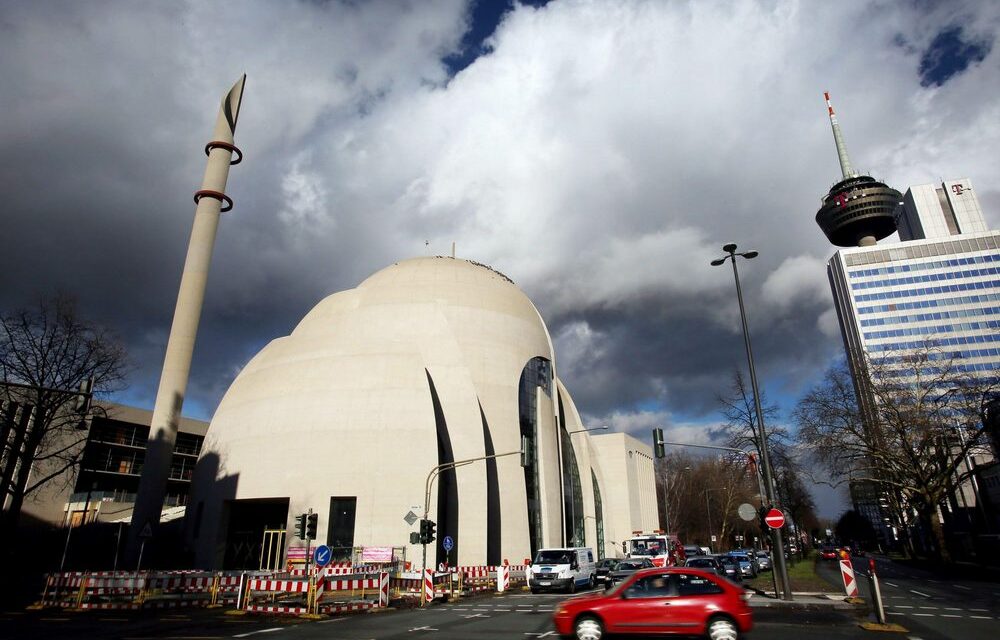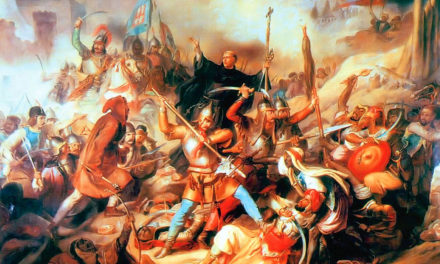does a domed festive mosque with a tall minaret fit into the traditional German cityscape? Of course not, but they dare to ask the question less and less, so as not to appear racist.
I received a letter from the organization of non-partisan patriots covering the entire German-speaking area. The patriots articulate similar things to what Hungary represents: they stand up for the rights of parents against the indoctrination of children at school, they protest against the restriction of freedoms and they promote the sovereignty of nation-states and the right of peoples to self-determination. They are asking me to sign their petition against the construction of the newest mosque in Germany, because they do not want Western Christian culture to disappear in Europe.
The mosque would be built in Dresden, in the old town, near the historic city's Great Park.
This historical park was built in the early 18th century by the Electors of Saxony on the French model. The ground plan of the garden is in the shape of a cross, with the ruler's summer palace in the center, surrounded by multi-storey garden pavilions. The ornamental garden is decorated with gems of antique and baroque art, sculptures that exaggerate the lush forms of the human body. All this splendor proclaimed the power and wealth of the Christian Saxon rulers for centuries. During the senseless American carpet bombing that turned Dresden into a sea of flames, all the buildings burned down and the park was destroyed.
In socialist times, a potato plantation and then a pioneer park took the place of the baroque ornamental garden.
The Great Park, finally flourishing again in its full splendor, would now have a close neighbor, the mosque that preaches the true faith and is equipped with an Islamic cultural center, with a large dome and a tall, slender minaret. The minaret can be seen from far away, and five times a day the muezzin's call to prayer would be heard from its top. At a distance of several kilometers, everyone can hear "There is no god but Allah, Allah is the Greatest."
The planned Dresden mosque is important for the cityscape, there are about 300 of them all over the country, mostly on the western coast. Does a domed festive mosque with a towering minaret fit into the traditional German cityscape? Of course not, but they dare to ask the question less and less, so as not to appear racist.
According to the official estimate of 2020, there are 2,800 mosques in Germany, which does not seem like a lot compared to the 24,000 Catholic churches and chapels. But while hundreds of Catholic churches have recently been closed and many have even been demolished, hundreds of mosques have been and are being built continuously. It is not known whether it is purely from the donations of believers, or whether the state also contributes support, or perhaps the European Union helps with successful integration?
Today, Islam is the third largest religion in Germany, with five and a half million Muslims registered. This is not so much as a percentage, but it is alarming in absolute terms.
Especially when, thanks to the statistics, we see that a few generations earlier, in 1945, only six thousand Muslims lived on German soil, thirty years ago there were 2.7 million, and their number is increasing exponentially due to immigration and reproduction. About 50 million Muslims live in Europe, but according to forecasts, this number will rise to 70 million by 2050. Seven times more than the entire population of Hungary.
In the past, the question was asked whether the number of true believers is increasing or whether they are becoming more visible because of the mushrooming of mosques. Does the mosque community facilitate integration or even help alienation? How much Islam can Germany tolerate anyway? And of course what? Because the religious leader who unites the local Islamic communities, the imam, comes to Germany from the Arab world and teaches people the Koran as is customary there. For boys too.
The Germans have long wanted to ensure that, like other religions, Islamic theological education takes place at German universities. Now finally, in 2021, we managed to start an Islamic college in Osnabrück with thirty people. I doubt if it will work. Because you cannot always form a true believer.
The authors of the patriotic petition fear that the planned Marwa Elsherbiny Islamic Cultural and Educational Center in Dresden will spread the extremist ideology of the Muslim Brotherhood.
Because the community behind the construction project is led by the radical Islamic preacher who is under surveillance by the Office for the Protection of the Constitution.
Based on the Office's observations, preacher Dr. Elgazar's statements are "consistent with the ideology of Hamas, the Palestinian branch of the Muslim Brotherhood," and "reflect an understanding of Islam that is incompatible with the free democratic basic order."
In 2020, the German Office for the Protection of the Constitution registered 28,700 extremist Islamists who could be accused of terrorism.
They are the ones who reject democratic principles, basic ideas of freedom and sympathize with Islamist terrorist organizations such as Boko Haram or even Hamas. If the registered persons form a network, at any time, they can carry out any coordinated armed terrorist act in the middle of Germany, perhaps with German weapons bought on the black market and sent to Ukraine.
The greater part of the German population has felt for some time that not much good can be expected from the excessive refugee policy, but the chancellor has only now realized the danger lurking in his country.
Because he was in Jerusalem, and there they showed him the cruelty with which Hamas killed its enemies. He was already talking about a tougher deportation policy on his way home, and lo and behold, the cabinet, despite the protests of the Greens, has already presented the relevant bill.
Those who do not have the legal right to stay in Germany must be suppressed with immediate effect! Those who are not entitled to protection must also leave the country, the chancellor said.
I would like to know how they will implement it, because at the moment they would have to get rid of more than fifty thousand people. At least according to their rather incomplete records.
Cover photo: The Great Mosque of Cologne on February 5, 2013. The construction of the 5,000-square-meter, 1,200-seat central mosque and the cultural center on the Innere Kanalstrasse cost about 25 million euros.
Source: MTI/EPA/Oliver Berg













